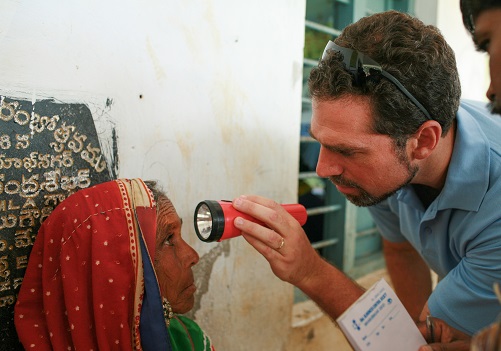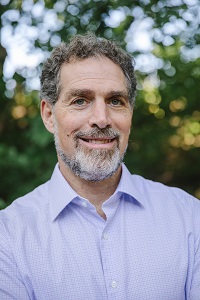A few weeks ago, the UN released a report summarizing the data on global progress towards the Sustainable Development Goals (SDGs). The conclusion was unambiguous – we are falling behind. If current trends persist, extreme poverty will still affect 575 million people in 2030, 84 million children will not be in school, and 300 million will be unable to read or write.
The report noted that reform to international financial architecture is critical to overcoming the major structural barriers hindering the progress of low- and middle-income countries. This is not an easy feat by any means. As someone who has been a social entrepreneur for decades, I believe that social enterprise has a critical role to play if we are to get close to meeting the SDGs. My experience in eye care has shown how the creation of markets is one of the best ways to make change that is sustainable for the long term.
Popularization of the social enterprise
The notion of social entrepreneurship was coined by Bill Drayton, founder and CEO of Ashoka in the early 1980s. However, only twenty years ago did the idea enter the mainstream. Before this, NGOs were very much positioned at the forefront of change – tasked with solving some of the world’s most pressing challenges to date. But through demonstrating the capacity to show metrics, impact, and return on investment, social entrepreneurs reimagined the traditional approach to social impact and the movement began to gain traction.
Reducing the dependence on philanthropy, social entrepreneurs started to gain popularity as the next generation of changemakers, as ‘field catalysts’. Armed with the heart of NGOs and the principles and practices of business, social enterprises became a strategic and ethical place for donors to put their money.
As a relatively new term in the early 2000s, a lot of people inadvertently fell into the title of social entrepreneur, just by simply fulfilling the definition set out by Drayton. I, for one, did not consciously set out to be a social entrepreneur or build a social enterprise, I set out to provide a solution.
The blurry vision problem
During my optometric training, I quickly realized the breathtaking scale of vision impairment across the world due to a lack of eye doctors and access to simple pair of eyeglasses.
I first saw how bad this problem was when I came across a seven-year-old boy carrying a book in braille. His family explained that he was blind from birth. Yet, when I examined his eyes, I discovered he wasn’t blind, he was extremely myopic, meaning his sight could be corrected with just a strong pair of glasses. A very simple fix if you have the right resources and knowledge.
This was not the only case I came across as a student where a person’s vision could easily be fixed through a simple intervention, and it left me to ponder: there must be simple and inexpensive ways to provide glasses without being bogged down by the complexities of providing comprehensive eye care?
It quickly became apparent that the existing models to tackle eye care were neither scalable, strategic nor empowering the marketplace in any way shape or form to provide a solution.
As a problem-solver and business minded individual I started to look at alternate solutions. I realized we not only needed to provide people with access to affordable glasses, we had to equip primary healthcare providers – such as nurses and community health workers – with the skills needed to identify blurry vision, dispense reading glasses, and refer for other eye conditions so that more people in communities can get their vision corrected. Inadvertently, I fell into the world of social entrepreneurship through wanting to help people access eyeglasses.
Accelerating progress
Access to eyecare underpins several of the UN’s SDGs. To prevent falling further behind on global progress towards these goals, vision correction needs to be seen as a powerful tool for social and economic development.
Correcting blurry vision supports the achievement of higher levels of economic productivity, bolstering income, health and wellbeing as well as removing barriers to employment.
In a wider sense, social entrepreneurs can accelerate progress towards the SDGs through their distinctly business-centered mindset. Utilizing business principles and practices, social entrepreneurs have the freedom to scale models creatively; whether this is through scaling internally or integrating their existing models into government and private sector bodies.
Beyond their strategic contributions, social entrepreneurs play a vital role in getting the word out. Because many develop a wide network of contacts through their work, social entrepreneurs can raise awareness around an issue and rally support and funding from their contacts across business, academia, NGOs and government bodies. Here lies the key point: Collaboration.
In the grand scheme of things, the solution VisionSpring is providing is just one piece of a far bigger puzzle.
This is not a point of discouragement. The United Nations General Assembly testifies that social entrepreneurs getting involved to fix one particular problem will be crucial to accelerating progress to meeting the SDGs.
Take Catalyst 2030 for example, the consortium of social entrepreneurs with the distinct mission to achieve the SDGs through testing bold new strategies for 17 separate SDG goals across the world. The fast growing movement represents 124 countries and 2,265 member organizations banding together to solve social issues at a system level. This is the spirit of entrepreneurship.
Empowering change
True innovation and change stems from close engagement with an issue on the grassroots level. It requires a deep understanding of the issue at hand and the unique challenges that come with it. Good social enterprises will no doubt succeed if they are thoughtful in their approach and form their models around the ability to be repeated and replicated in different regions and contexts.
Social entrepreneurs represent a powerful and transformative force in driving social change and sustainable development. Together, through partnerships with diverse stakeholders, including governments, non-governmental organizations, businesses, and local communities, these enterprises can maximize impact and accelerate global development for an equitable tomorrow for all – especially when it comes to achieving the SDGs.
Dr. Jordan Kassalow is the founder of VisionSpring


